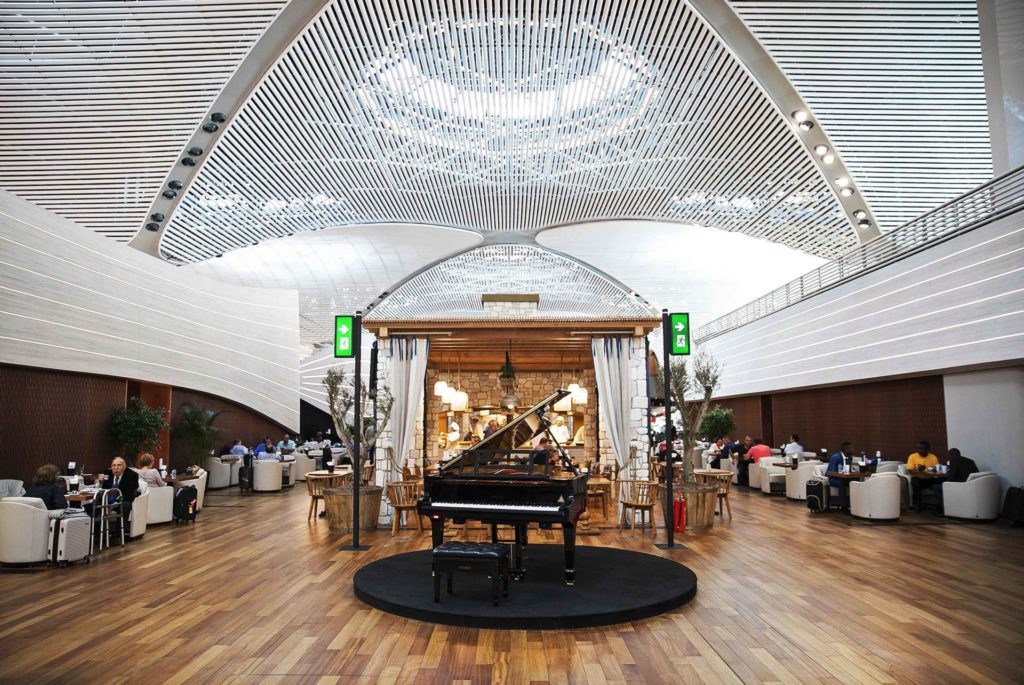Built in a record-breaking three and a half years and spanning an area of 76,5 million square metres, Istanbul’s new airport is officially the largest infrastructure project Turkey has ever undertaken.
Arriving at the city’s new airport, airplanes soar above the Black Sea, offering passengers a glimpse of its glimmering shores moments before they touch down and head south, into the booming heart of the city.
Disembarked passengers quickly find themselves in the hushed bustle of the airport’s halls and expansive shopping areas, which are full of activity, mere months after the opening.
Benefiting from its strategic location at the crossroads of two continents, in its initial stage, Istanbul Airport has rapidly emerged as a major travel hub for Europe, Asia and Africa, already boasting a handling capacity of 90 million passengers, since it opened for service in October 2018.
In April of this year, Turkish Airlines moved over all its operations to the new airport, an operation which was organised over just 45 hours, and was dubbed as "the largest in aviation history." The airline, which is the largest in the world by destination served, flew 337 of its planes to the new location, and also moved over 47,000 tons of equipment in 686 trucks and hundreds of other vehicles from their old base of operations near the Sea of Marmara.
Acting as the world’s new gateway into Turkey’s rich history, striking landscapes and exquisite culture and cuisine, Istanbul Airport will become the world’s largest international airport upon completion, reaching an overall capacity of 200 million passengers per year.
The city’s new airport boasts remarkable architecture and internationally-celebrated design.
Drawing inspiration from the city’s emblematic Bosphorus strait, the new airport’s design puts passenger experience front and centre, offering travellers expansive and diverse shopping and duty-free areas and a vast choice of food and beverage shops.
Its imposing, multi-level exteriors give way to bright, spacious and functional terminal halls which seamlessly accommodate the streams of passengers coming and going on one of the 45 domestic or 249 international routes already in operation.
Rising to become an international travel mega-hub, the airport will connect all corners of the globe and have flights departing to more than 350 destinations.
With a large number of comfort and lounge areas, exhibition galleries and even a spa, the new airport brings air travel experience to the next level.
The Brussels Times

